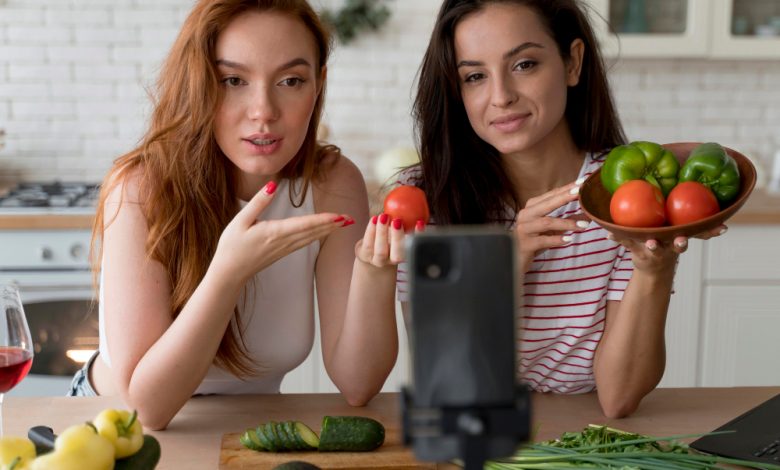Monetising Your Food Videos: Tips for Success on YouTube and TikTok

Food videos have exploded in popularity on platforms like YouTube and TikTok, where millions of viewers tune in daily to watch recipes, cooking hacks, food challenges, and more. For content creators, this growing interest in food content offers exciting opportunities to monetise videos and build a sustainable income. If you’re passionate about food and want to turn your video-making hobby into a profitable venture, here’s a guide to help you succeed in monetising your food videos on YouTube and TikTok.
1. Understand the Basics of Monetisation on YouTube and TikTok
Before diving into tips, it’s essential to understand how monetisation works on these platforms. Each has its own requirements, and knowing these can help you focus your efforts and build your channel strategically.
YouTube Monetisation Basics:
- To monetise on YouTube, you need at least 1,000 subscribers and 4,000 hours of watch time over the past 12 months.
- Once you meet these criteria, you can join the YouTube Partner Program and earn through ads, memberships, and Super Chats (for live streaming).
- You can also generate revenue through brand partnerships, affiliate links, and sponsored content.
TikTok Monetisation Basics:
- TikTok’s Creator Fund is available for creators who have at least 10,000 followers and 100,000 video views in the past 30 days.
- TikTok also offers options like live gifts, brand sponsorships, and affiliate marketing.
- Additional revenue sources include promoting products through brand deals and creating exclusive content for paying subscribers.
Understanding these monetisation requirements will help you set realistic goals and stay motivated as you work to grow your audience.
2. Find Your Unique Food Niche
A unique niche is critical for standing out in the crowded food content space. Identify your area of expertise or a style that makes your content different from others. This could be anything from plant-based recipes and gourmet cooking to quirky food challenges or quick meal hacks.
Popular Food Niches on YouTube and TikTok:
- Quick & Easy Recipes: 15-minute meals, one-pot dishes.
- Health-Focused: Vegan, keto, gluten-free recipes.
- Unique Cuisines: Specialising in international dishes, like Korean, Mexican, or Indian food.
- Food Challenges: Fun challenges like “Giant Food” or “Eating Only [Color] Foods for 24 Hours.”
- Street Food Exploration: Showcasing unique dishes from around the world.
Focusing on a niche will help attract a dedicated audience who share similar food interests, increasing your chances of building a loyal fanbase.
3. Invest in Quality Equipment and Editing
High-quality visuals and professional editing are essential for making your food videos appealing. Good lighting, clear audio, and creative editing can significantly boost engagement, especially on platforms like YouTube where high production values are expected.
Equipment Essentials:
- Camera: A DSLR or mirrorless camera provides excellent quality, but modern smartphones can also capture high-definition video.
- Tripod: Ensures stable shots, especially useful for recipe tutorials.
- Lighting: Natural light is great, but invest in a softbox or ring light if filming indoors.
- Microphone: Clear audio is crucial for cooking instructions, so consider a lapel or shotgun microphone.
Editing Tips:
- Use editing software like Adobe Premiere Pro, Final Cut Pro, or even mobile apps like InShot.
- Keep transitions smooth and cut unnecessary sections to keep videos engaging.
- Add music, captions, or voiceovers to enhance the viewing experience.
High-quality production helps build credibility and keeps viewers coming back for more.
4. Optimise Your Content for Discoverability
On both YouTube and TikTok, optimising your videos with relevant keywords and descriptions is essential for reaching a larger audience. YouTube’s algorithm relies heavily on keywords, while TikTok’s algorithm focuses on engagement and watch time.
Optimisation Tips for YouTube:
- Use Descriptive Titles: Include relevant keywords that people are likely to search for, like “Easy Vegan Tacos Recipe.”
- Add Relevant Tags: Tags help YouTube understand your video content, so include specific and broad terms.
- Optimise Descriptions: Write detailed descriptions, including keywords and recipe information.
- Create Eye-Catching Thumbnails: Thumbnails are the first thing viewers see, so make them visually appealing.
Optimisation Tips for TikTok:
- Use Hashtags: Trending and niche hashtags help your video reach the right audience.
- Engage in the First Few Seconds: Catch viewers’ attention early with a hook to improve watch time.
- Join Challenges and Trends: Participating in trending challenges can increase your video’s visibility.
SEO and algorithm optimisation can boost your content’s reach, attracting more views and subscribers over time.
5. Engage with Your Audience
Engaging with your audience is key to building a loyal following. Respond to comments, ask questions, and create content based on viewer suggestions to foster a strong community around your channel.
Audience Engagement Tips:
- Respond to Comments: Show appreciation and answer questions.
- Ask for Feedback: Encourage viewers to leave suggestions or request recipes.
- Create Interactive Content: Host live Q&A sessions or cooking demos to connect with your audience.
Building a community fosters loyalty, making viewers more likely to support your monetisation efforts by watching ads, joining memberships, or purchasing products.
6. Utilise Multiple Revenue Streams
While ad revenue can be profitable, relying solely on it may limit your income potential. To maximise earnings, consider additional revenue streams like brand partnerships, affiliate marketing, and selling products or services.
Alternative Revenue Streams:
- Brand Sponsorships: Collaborate with brands that align with your content. Sponsored videos are highly profitable for creators with engaged audiences.
- Affiliate Marketing: Promote cooking tools, ingredients, or books through affiliate links, earning a commission on sales.
- Merchandising: Create and sell branded merchandise like aprons, mugs, or recipe books.
- Cooking Classes or Workshops: Host virtual classes, offering exclusive tips or live demos for paying attendees.
Diversifying your income can provide more stability and increase your earning potential over time.
7. Collaborate with Other Creators
Collaboration can be a powerful way to grow your audience and introduce your content to new viewers. Reach out to other food creators on YouTube or TikTok and brainstorm ways to work together, whether through joint videos, shoutouts, or virtual events.
Collaboration Ideas:
- Create a recipe swap video where each creator makes the other’s signature dish.
- Host a cooking challenge where each participant shares a unique twist on a popular recipe.
- Join forces with non-food creators to bring fresh ideas and variety to your content.
Working with others helps expose your videos to different audiences, which can lead to more subscribers and potential revenue opportunities.
8. Track Analytics and Adapt
Monitoring analytics is crucial for understanding what’s working and where you can improve. Both YouTube and TikTok provide insights on audience demographics, watch time, and engagement, allowing you to refine your content strategy.
Important Metrics to Track:
- Views and Watch Time: Indicates content popularity and viewer retention.
- Engagement Rate: Shows how often viewers are liking, commenting, or sharing your videos.
- Audience Demographics: Helps tailor content to your core audience’s preferences.
Use these insights to optimise future videos, enhance engagement, and ultimately, improve monetisation potential.
9. Stay Consistent and Patient
Monetising your food videos on YouTube and TikTok doesn’t happen overnight. Success on these platforms requires consistent uploads, patience, and a willingness to adapt. Develop a content schedule and stick to it, even if results aren’t immediate.
Consistency Tips:
- Set a Posting Schedule: Commit to uploading videos regularly to build momentum.
- Experiment and Evolve: Test different types of videos and adapt to viewer feedback.
- Celebrate Small Wins: Recognise milestones and improvements along the way.
Consistency builds trust with your audience and signals to algorithms that your channel is active, which can ultimately lead to greater reach and monetisation success.
Conclusion
Turning your passion for food into a profitable venture on YouTube and TikTok is achievable with the right strategies. By focusing on quality content, engaging with your audience, optimising for discoverability, and diversifying revenue streams, you can build a sustainable income and a loyal following. Embrace the journey, stay consistent, and enjoy sharing your culinary creations with a global audience.





